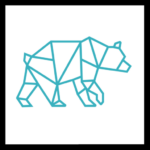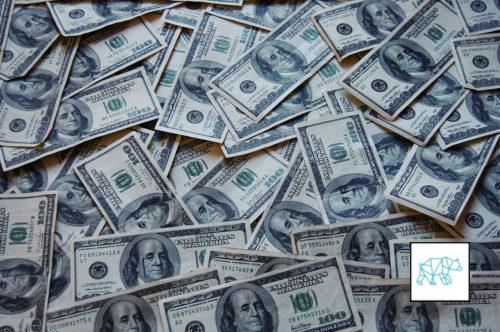Points to take away from this read:
Decide how much you are willing to lose to give trading a good try.
Trade small, get consistent, then grow.
Before you switch to a live account
Read on to find out how you can move on to a live account and leave the paper trading behind.
Big Time Spender account
When I first started learning, one of my first steps was to find a broker and platform I could use for paper trading. For those that don’t know, this means trading with fake money. Some of these give you a huge account of 100.000 — 200.000 dollars in it. Which for most, is simply not realistic. I wanted to mimic real life situations and treat the ‘fake’ account as if it was a real one. At least… as much as I could. So how do you go about switching to a live account? By being patient. For me, I needed to do a few things first before I went ‘live’.
Going where many men have gone before
You are not the first and surely not the last one to start trading. What separates you from the rest, in my opinion, is your goal, your preparation, and your tenacity. Luckily, I can suggest a few things to the first two. The last one is up to you. Just like in business, just because a bakery has opened up shop somewhere doesn’t mean you can’t open up shop next door selling pastries. Again, your goal, preparation and tenacity will define your success. You might have heard that 10% of the traders make money off the remaining 90%. That’s a lot of people losing money. So get your mind right and let’s start with setting goals.
Everybody’s got an opinion
The opinions are divided on how much you should start trading with. How you should go about your trading. To me?! They are all, in their own respect, right. I say this because it really depends on several factors that only you can decide on your own. Things like how much you want to ‘win’ in any given trade and how much you are willing to lose for it. How aggressive you are in trading. How much you are able or willing to lose if everything goes against you. Keep in mind that you are still learning and most likely will end up losing a lot before you start making some money. Even then, it still takes a while before you become consistent. And then some more before you can call yourself a success and start browsing for yachts. So it’s most likely going to be a long ride. So buckle down.
IFTTT
Are you familiar with the awesome app IFTTT (if this then that)? It’s an automation app with very little to do with trading. Although, there is a way to use IFTTT in your benefit when it comes to trading, but more on that in another post. If you don’t know it please go check it out at www.ifttt.com. So, enough advertising for free! Back to trading. What I mean with the IFTTT approach is that you need some sort of plan to measure your process and then connect an action to it. For me it went like this. I had a certain amount in mind that I was fine with losing. More on that later. I broke that up into three chunks. Why three? No particular reason other than the amount chopped nicely down into three. I would start taking positions using only the money from the first chunk. Then when I lost it all. The ‘IF’. I would stop. Gather the information on the trades I had made and then spend some time analyzing it to try and see patterns in the things that I did wrong. The ‘THAT’. I hope you didn’t mind the little detour we took earlier. What this did for me is it created insights into the positions I took. Overall I guessed the right direction but lost anyway.The trade would go against me first before going my way. Another thing I noticed were my emotions when it comes to trading. Wow, what a roller-coaster. I can be at times, more emotional than normal. And this is another aspect of trading that I love. You find out your own weaknesses, as well as your strengths. Then you can start improving and building on them. Learning more about yourself in the process.
Deciding how much you want to lose
Wait, what?! Sounds counterintuitive right? As with most businesses, it will need a certain amount of investment. Blood, sweat, tears and well… money. It’s all about how much you are able and willing to spend and risk losing until you become profitable. As with any business you should come up with a plan to start exploring the business before you dive in. Coming up with a number you are willing to invest to try and make it work is a part of it. For me?! The amount I would be fine with losing was 1500 dollars. With this amount I felt I was confident to at least gauge the markets and my ‘game’. Or lack thereof, of course. Then I could make a decision. Quit. Or go all in! Please take into consideration your own personal situation. I can’t stress this enough. I am single and have no kids at the moment and there are no other people depending on me. Combine that with the fact that I already have income streams that let me have enough time in a day to spend on trading. Your situation is most likely different than mine so please set your goals accordingly.
It’s all about the paper Benjamins.
Read this article if you want to know more about the platforms I have and still use. I started with a paper trading account for about 4 months. Trying to get a feel for it by observing price action and what several indicators that I had learned do in real life. In theory they all sound fantastic. As if you could blindly follow the indicator and make huge sums of money. Wrong! Hopefully you already know that it’s about a confluence or coming together of signals that should make you want to enter or exit a trade. After I got a bit of a feel for the markets I decided to start taking positions with my fake account. I took these positions at first kind of willy nilly because I didn’t have much of an idea to what I was doing. And every time I learned a bit more I tried to apply this to the next position I took. The account size I started paper trading with was 2000 dollars through FXCM and their great software Marketscope 2.0. Why FXCM? Read this article. I tried to take the most realistic approach I could. I would trade anywhere between 1 to 5 micro lots which would mean my position size was only about 10 to 25 dollars US. With which I could live with losing in real life. After having blown through half of this fake account I was really anxious to get started trading live. Even though I was at a loss. I just wanted to get my feet wet. Perhaps I felt like I wasn’t committed enough but most of it was being anxious to just get started.
Dipping your toes in
As I mentioned earlier I would start trading with money that you can afford to lose. To me that was 1500 dollars. Since I am not paying for any courses and subscriptions of any kind I feel that whatever money I put in will go towards my schooling, my tuition if you will.
Even if I would end up losing all of it… I simply paid for my classes and flunked.
Position sizes
I trade commodities futures on a leveraged account (more on that here).My leverage is 1:50. Meaning if 1 micro lot would normally cost 500 my account gets ‘charged’ 10 dollars. So even though I have a 500 dollar position, I don’t need to have 500 dollars in my account to be able to trade it. More on trading futures with a leveraged account here. This means I can win a lot for the small money I put down for it. But that also means I can lose a lot as well. After you are consistent in your trades you can gradually start increasing your position size.
So I put in 500 dollars into a trading account (read here which one) and I started trading live.
Want to know what happened then? Read this post on what I did with the 500 dollars.
Thank you for reading.
How did you go about starting with a live account? What were your regrets, if any, and what would you advise to others starting to trade? Let me know what you think. It is much appreciated. Also, please comment below with suggestions on how I can improve or just to say hi!

